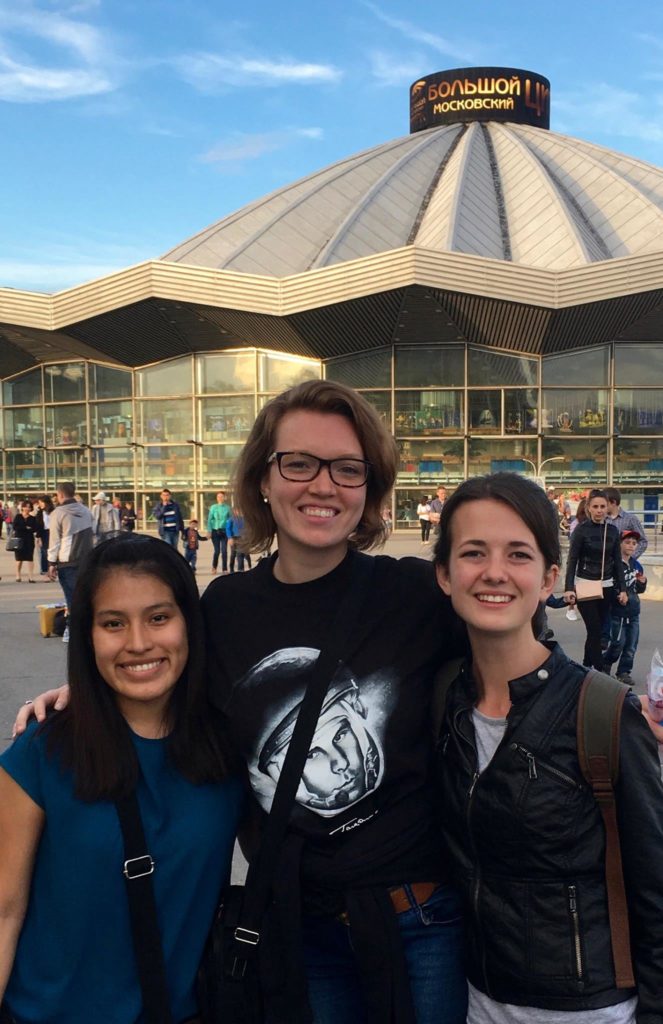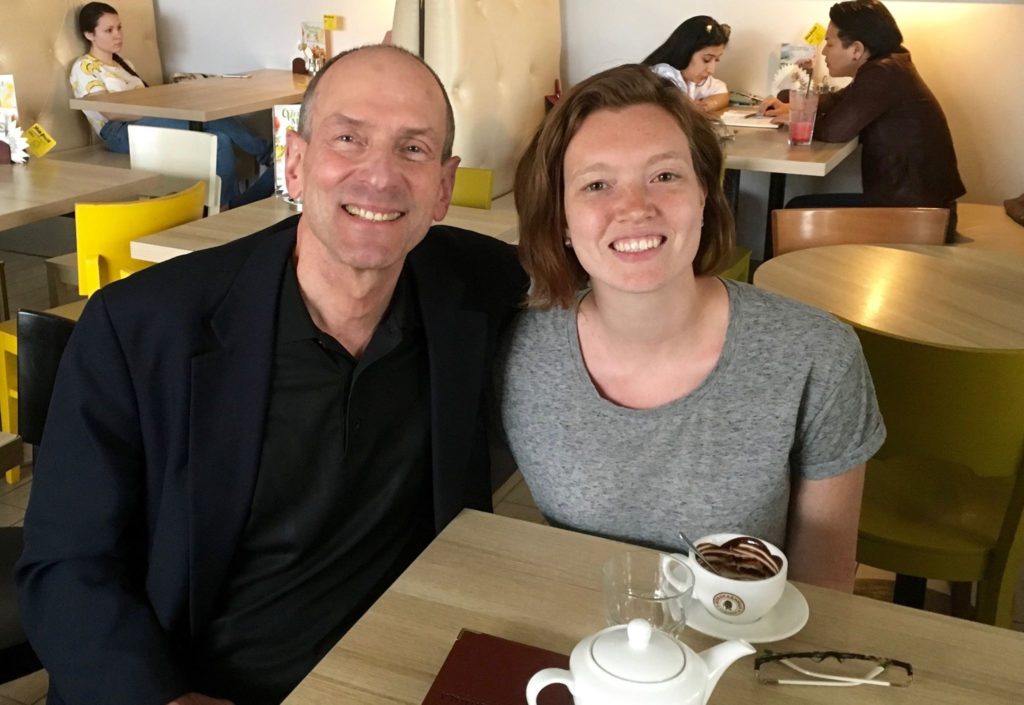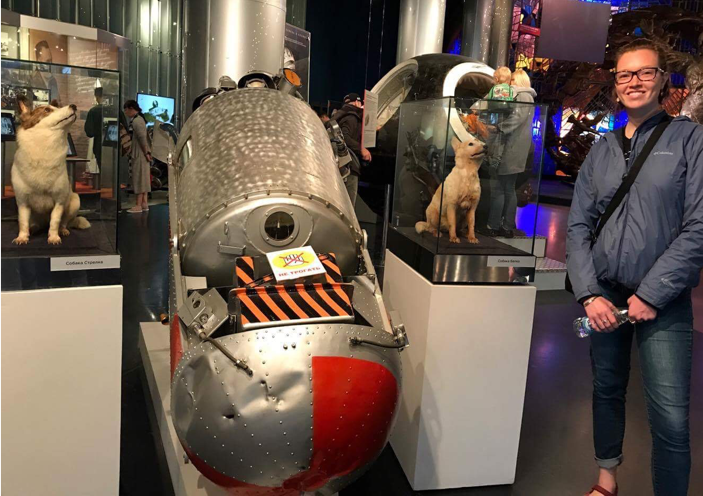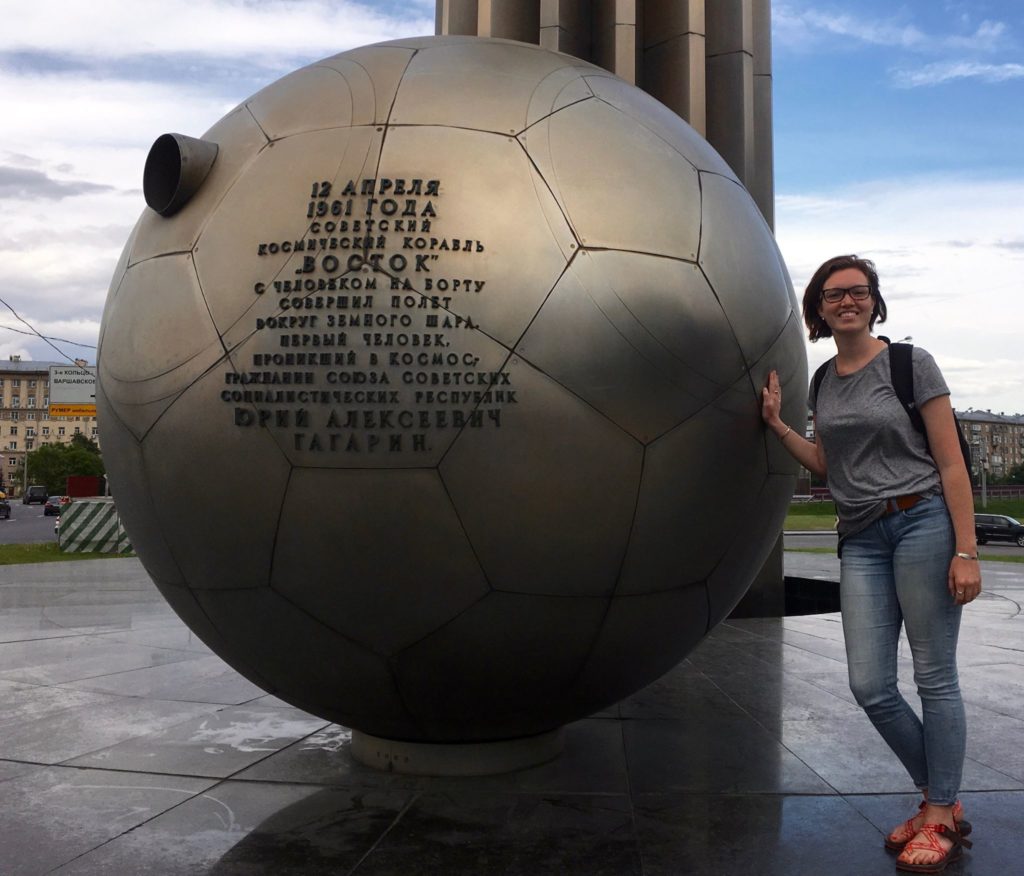Written and Produced by Meg Foster, Russia 2017
During the time I spent in Russia, I visited many scientific institutions, interviewed 16 distinguished scientists, and explored numerous museums, palaces, parks, and libraries. The entire experience was well orchestrated and I enjoyed the freedom that the SPAN program offered. For this student of astrophysics and physics, SPAN’s flexibility, along with the responsibility required of students, allowed me to make the most of my experience from the beginning to the end.



My paper, “Soviet Space Race Propaganda: Women in Space and the Status of Women in Science,” tied together many aspects of women in science, ranging from the initial inclusion of women in scientific fields at the end of the nineteenth century all the way to 2014, when the fourth Russian woman was sent to Space. It also incorporates personal quips regarding my perspective as a woman studying astrophysics.

After SPAN ended and my paper was printed, I felt a great sense of accomplishment. I enjoyed the process, but I wanted to see what else I could “get out of it.” Thankfully, I was invited to present my research project at the University of Minnesota’s Space Physics Research seminar this fall. It was well attended, and I was excited to share my work. Recently, I shared my work at Central Lakes College in Brainerd, Minnesota, for a “Cultural Thursday” presentation.


